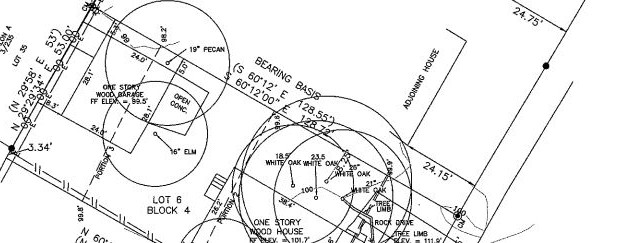It’s not over till it’s over: Lightsey 2 at Council today
Thursday, March 5, 2015 by
Elizabeth Pagano Today, City Council members will consider a resolution that could conclude the saga of a South Austin development that is no stranger to City Hall.
The item is another chapter in the seemingly endless saga of the Lightsey 2 development. That development has come under fire from neighbors, who have been battling the development and the extension of Aldwyche Drive for about a year and a half.
Lightsey 2 developer PSW Real Estate has been dealing with the repercussions of this opposition for the same amount of time. Though it’s not normally involved in the preliminary plan process, the Environmental Board weighed in on Lightsey 2 at the behest of neighbors concerned about heritage trees on the land. Later, the Planning Commission reconsidered (but did not rescind) its approval, drawing out the process even further.
When the Planning Commission approved the preliminary plan, it also approved connecting Aldwyche Drive and Lightsey Road, over the objections of residents. Without Council Member Ann Kitchen’s resolution, that connectivity would never have been considered by Council.
Kitchen’s resolution will close the road to vehicular traffic with a gate. The developer has agreed not to oppose it.
Kitchen spoke with the Austin Monitor and explained that PSW, neighbors and the city had sat down to figure out the solution. She said that by the time she got involved, it was an idea the neighbors and developer had already established.
“It’s a unique approach to the concerns that we had about the cut-through automotive traffic on this new roadway extension of Aldwyche Drive,” said Kitchen. “It’s a traffic-calming device.”
Kitchen explained that the gate would block cars but allow bicycles, pedestrians and emergency vehicle access, much like the gate at Crestview Station in North Central Austin that has recently come under controversy. She said that her solution is a separate and different process from the zoning case; it is a transportation issue that hinges on the city’s responsibility for approving public roads.
“I think we are looking at another aspect of the whole process, and that has to do with the city’s accepting a road, and looking at the safety of it,” said Kitchen. “What we came up with as a solution for that is just to put this traffic-controlling device on the road.”
Kitchen said that this proposal, which creates a Council resolution to address connectivity outside of a zoning case, is singular, but could be used in the future.
“It’s kind of a unique situation,” said Kitchen. “I suppose if there were another unique situation like it then yes, it would be considered. But what’s unique about it is that it is a new roadway extension and it’s not an existing road that the public uses right now.”
As the resolution is an item from Council, city staff does not offer a recommendation and, instead, follows Council direction. In this case, if Council approves the resolution, it directs the city manager to install the gate without additional staff direction. Once installed, it cannot be removed except by additional Council action.
Former Planning Commission Chair Dave Sullivan spoke with the Monitor about the idea of connectivity in general. He pointed out that wherever there is a street that is not a cul-de-sac, there is an expectation that, someday, it will be extended.
“I personally think that it’s unreasonable for the people to try and stop it, because they should have known all along that the street would be extended,” said Sullivan. “If there is a stubbed-out section, you should expect that the road is going to be extended.”
Sullivan explained that connecting streets serves a greater purpose. With more connections, trip lengths tend to be shorter because drivers have more options about what route they can take.
“In the Imagine Austin Comprehensive Plan, we tried to emphasize connectivity. It’s something that cuts down on trip length and helps people make more trips on foot or by bike,” said Sullivan.
During the many boards and commissions hearings about Lightsey 2, connectivity, as well as the extension of Aldwyche Drive, were at the very center. In fact, the potential reconsideration of the plan hinged on a portion of the code that appeared to grant commissioners the power to deny connectivity under certain circumstances.
Planning Commissioners will discuss that provision at their Tuesday meeting, but have said it will not affect Lightsey 2.
At their most recent meeting, commissioners heard a legal interpretation of that portion of code during an executive session. Though some on the dais seemed eager to share what they had discussed, they will not be able to do that publicly until March 10.
Sullivan told the Monitor that he was on the Planning Commission when the section that allows the commission to omit road connections was added to the code. He explained that the commission intended it to be used for “a good reason” such as extreme topography, water or other obstructions that could drive up the cost of a new development and negatively impact affordability.
“It was not our plan to allow neighbors to stop connections,” said Sullivan, who warned against making that power more discretionary, as he has heard may happen.
“My problem with that would be that you would end up with some road connections made and other road connections not made, based on the whims of a few people,” he said. “Those road connections could affect hundreds of people who might use them.”
This story has been corrected. The subdivision name “Crestview One” has been changed to “Crestview Station”
You're a community leader
And we’re honored you look to us for serious, in-depth news. You know a strong community needs local and dedicated watchdog reporting. We’re here for you and that won’t change. Now will you take the powerful next step and support our nonprofit news organization?









